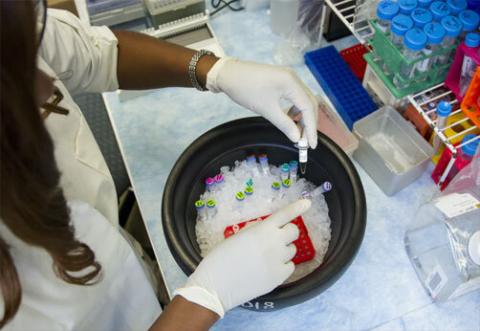
Photo credit: National Cancer Institute/Unsplash
Systemic racism persists in the scientific endeavor. Racial disparities prevent talented individuals from pursuing and staying in their chosen field due to the challenges of navigating entrenched biases, barriers, and hostility—and it’s time for the scientific community to come together to confront these inequities.
These were the key messages of "Addressing Diversity, Equity, Inclusion, and Anti-Racism in 21st Century STEMM Organizations," a summit hosted by the National Academies of Sciences, Engineering, and Medicine (NASEM) on June 29 and 30.
I was pleased to attend and participate in the June 30 panel, “Reflection and Next Steps with Leaders in Science and Society.” My co-panelists and I provided a broad view of the scientific enterprise and set a vision for efforts to increase the participation of underrepresented groups in science, technology, engineering, math, and medicine (STEMM) settings.
The NIH is committed to ending systemic and structural racism within the agency, the various extramural institutions it supports, and anywhere NIH research activities take place. Advancing this significant goal involves implementing comprehensive, institutional-level strategies and approaches informed by an extensive body of evidence. UNITE, a new NIH-wide effort devoted to ending racial inequities across the biomedical research enterprise is a crucial first step on this pathway.
Another such approach is the NIH Common Fund’s Faculty Institutional Recruitment for Sustainable Transformation (FIRST) program. As I described at the NASEM summit, FIRST is an example of a program that fosters sustainable institutional culture change; promotes institutional inclusive excellence by hiring diverse faculty cohorts, and supports faculty development, mentoring, sponsorship, and promotion.
My co-panelists emphasized that progress requires dedicated leadership driving coordinated changes in improvement, admissions, mentoring and educational practices, and reassessment and transformation of institutional practice. No single, quick approach will improve the participation of underrepresented groups in STEMM. Effective cultural change takes time and requires vigilance for the foreseeable future.
Yet as I told the meeting attendees, I remain hopeful because we’re at a tipping point. This moment in time and the recent events that led us here—particularly the COVID-19 pandemic and the murder of George Floyd—prompted national conversations on diversity, equity, and inclusion. As a result, we’re in an accelerating phase of making sure the scientific endeavor is a place where everyone feels welcome and can thrive in their career.
A Charge from Congress
The NASEM held the summit, in part, in response to a request from Congresswoman Eddie Bernice Johnson (D-TX), Chairwoman of the House Committee on Science, Space, and Technology. She asked the NASEM to "assemble a distinguished group of individuals to assess the influence of systemic racism in academia on the careers of individuals belonging to racial and ethnic groups historically underrepresented in the scientific, technical, and medical workforce."
In keynote remarks on June 29, Marcia McNutt, President of the National Academy of Sciences, said the National Academies are committed to removing the barriers that stand in the way of educational and workforce opportunities for underrepresented individuals in science.
"We will also use our role as advisor to the nation to guide the way forward using evidence and research, as we have heard today and network of experts to build out our script," said McNutt.
The NASEM devoted the summit’s first day to sessions on the systemic and structural nature of racism and bias. Panelists on the second day covered ways to move STEMM settings forward. Discussions addressed best practices for confronting systemic racism, identified ways to advance diversity, equity, and inclusion in STEMM fields, and recognized the effect of systemic racism on the careers of individuals.
Moving Forward Together
The depth of the knowledge shared during the summit sessions is vital to diversifying the scientific workforce. I’m excited about the momentum the NASEM summit brings to this challenge and the potential our numerous NIH initiatives hold to effect transformational change in the biomedical research enterprise. But ending racism in STEMM involves the entire scientific community working together to remove the barriers that keep talented minds from participating in science.
That’s why the NASEM summit is a pivotal moment in achieving equity in STEMM.
A common theme throughout the conference—and a belief SWD shares—is that it takes a village to create institutional change and address the complex aspects of structural racism. Moving forward together ensures we will make timely progress on the challenge of dismantling systemic racism in science.
SWD is proud to lead diversity, equity, and inclusion strategies in the biomedical research enterprise. We look forward to collaborating with internal and external partners and stakeholders to make progress on this critical endeavor.
Dr. Bernard’s Parting Thoughts
The NIH seeks to exemplify and promote the highest level of scientific integrity, public accountability, and social responsibility in the conduct of science. However, it cannot achieve this goal if it fails to welcome and include scientists from diverse backgrounds in the biomedical research enterprise, and we all must do our part.

